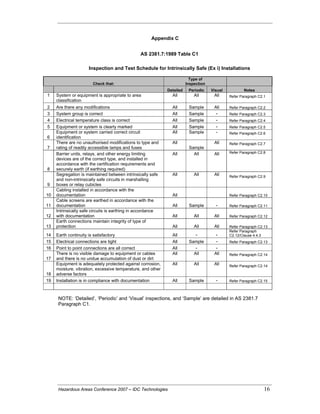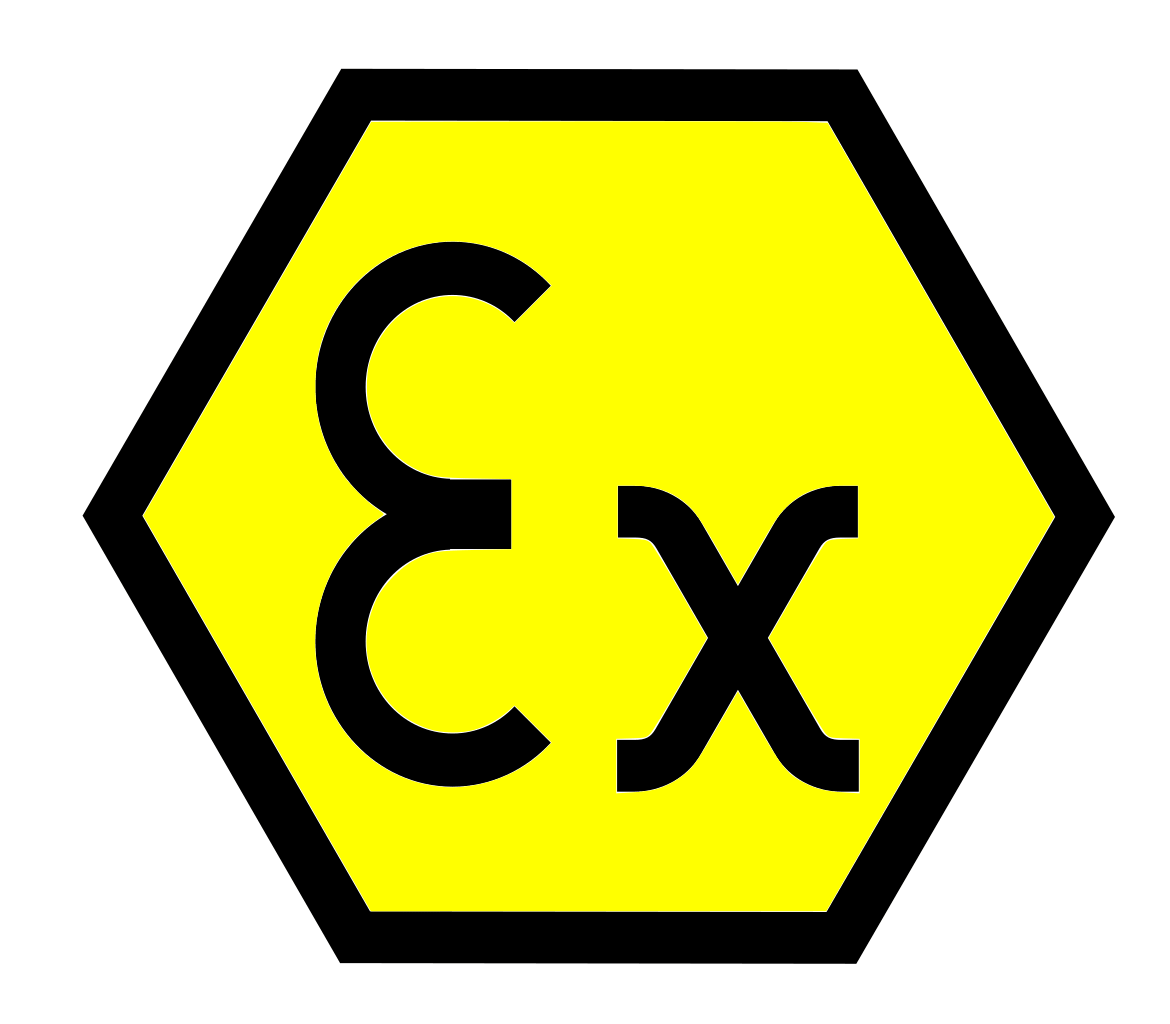Roar Solutions for Beginners
Roar Solutions for Beginners
Blog Article
Little Known Questions About Roar Solutions.
Table of ContentsThe 6-Minute Rule for Roar SolutionsThe Ultimate Guide To Roar SolutionsSome Ideas on Roar Solutions You Should Know
In order to protect setups from a possible explosion a method of evaluating and classifying a possibly hazardous location is required. The objective of this is to ensure the proper selection and installation of tools to eventually avoid a surge and to make certain safety of life.
(https://au.enrollbusiness.com/BusinessProfile/7095102/ROAR%20Solutions)
No devices must be mounted where the surface area temperature of the equipment is higher than the ignition temperature of the offered hazard. Below are some common dirt hazardous and their minimum ignition temperature level. Coal Dust 380C 225C Polythene 420C (thaws) Methyl Cellulose 420C 320C Starch 460C 435C Flour 490C 340C Sugar 490C 460C Grain Dirt 510C 300C Phenolic Resin 530C > 450C Aluminium 590C > 450C PVC 700C > 450C Residue 810C 570C The chance of the hazard existing in a focus high sufficient to cause an ignition will differ from area to location.
Harmful location electrical tools perhaps made for use in higher ambient temperature levels. Field Repair By Authorised Personnel: Complex screening might not be required nevertheless specific procedures might need to be followed in order for the devices to maintain its 3rd party ranking. Each item of devices with a harmful rating must be assessed independently.
Fascination About Roar Solutions
The devices register is a comprehensive database of equipment records that consists of a minimum set of areas to determine each product's area, technical criteria, Ex classification, age, and ecological data. This information is important for tracking and taking care of the equipment properly within harmful areas. In contrast, for regular or RBI sampling inspections, the grade will be a combination of In-depth and Close inspections. The ratio of Detailed to Shut assessments will certainly be identified by the Equipment Threat, which is evaluated based upon ignition risk (the probability of a resource of ignition versus the chance of a flammable atmosphere )and the unsafe area classification
( Area 0, 1, or 2). This variant will certainly also influence the resourcing demands for job preparation. As soon as Great deals are specified, you can develop tasting strategies based upon the sample size of each Lot, which refers to the variety of random tools products to be evaluated. To determine the required example dimension, two elements need to be examined: the size of the Great deal and the classification of examination, which indicates the level of initiative that must be applied( lowered, typical, or increased )to the examination of the Whole lot. By combining the group of inspection with the Whole lot size, you can after that develop the proper rejection standards for an example, suggesting the permitted number of defective things found within that sample. For even more information on this process, please refer to the Energy Institute Guidelines. The IEC 60079 typical recommends that the optimum interval in between evaluations should not exceed 3 years. EEHA evaluations will likewise be conducted outside of RBI campaigns as part of scheduled maintenance and devices overhauls or repairs. These inspections can be attributed towards the RBI sample dimensions within the impacted Lots. EEHA examinations are performed to recognize mistakes in electric tools. A heavy scoring system is vital, as a solitary item of tools might have numerous faults, each with varying degrees of ignition threat. If the combined rating of both examinations is less than twice the fault rating, the Great deal is regarded acceptable. If the Whole lot is still considered unacceptable, it needs to undertake a complete assessment or validation, which may trigger more stringent inspection protocols. Accepted Whole lot: The root causes of any type of faults are determined. If an usual failing mode is located, additional devices may call for inspection and repair. Mistakes are identified by severity( Security, Integrity, House cleaning ), ensuring that urgent concerns are examined and resolved promptly to minimize any type of effect on safety and security or procedures. The EEHA database must track and record the lifecycle of faults together with the rehabilitative actions taken. Applying a robust Risk-Based Evaluation( RBI )strategy is critical for making sure compliance and security in taking care of Electric Equipment in Hazardous Areas( EEHA) (Roar Training Solutions). Automated Fault Scoring and Lifecycle Administration: Effortlessly handle faults and track their lifecycle to enhance assessment accuracy. The intro of this assistance for risk-based examination further strengthens Inspectivity's setting as a best-in-class solution for regulatory conformity, as well as for any kind of asset-centric inspection usage case. If you are interested in finding out more, we welcome you to request a presentation and find just how our solution can transform your EEHA administration procedures.
A Biased View of Roar Solutions

In terms of eruptive danger, a harmful location is a setting in which an eruptive ambience exists (or may be anticipated to be existing) in quantities that call for unique safety measures for the construction, installment and usage of equipment. eeha courses. In this post we discover the challenges dealt with in the workplace, the risk control steps, and the required proficiencies to work safely
It issues of modern-day life that we manufacture, keep or handle a series of gases or liquids that are considered combustible, and a range of dirts that are regarded combustible. These materials can, in certain conditions, form eruptive atmospheres and these can have significant and unfortunate effects. A lot of us are acquainted with the fire triangle eliminate any among the three components and the fire can not take place, however what does this mean in the context of harmful locations? When breaking this down right into its easiest terms it is essentially: a mix of a specific quantity of launch or leak of a certain substance or material, combining with ambient oxygen, and the presence of a resource of ignition.
In most circumstances, we can do little regarding the levels of oxygen airborne, but we can have significant influence on resources of ignition, as an example electric devices. Harmful areas are documented on the dangerous area category illustration and are recognized look at this web-site on-site by the triangular "EX LOVER" indicator. Below, among various other essential info, areas are split into 3 types relying on the threat, the probability and period that an eruptive environment will certainly exist; Area 0 or 20 is considered the most hazardous and Area 2 or 22 is deemed the least.
Report this page